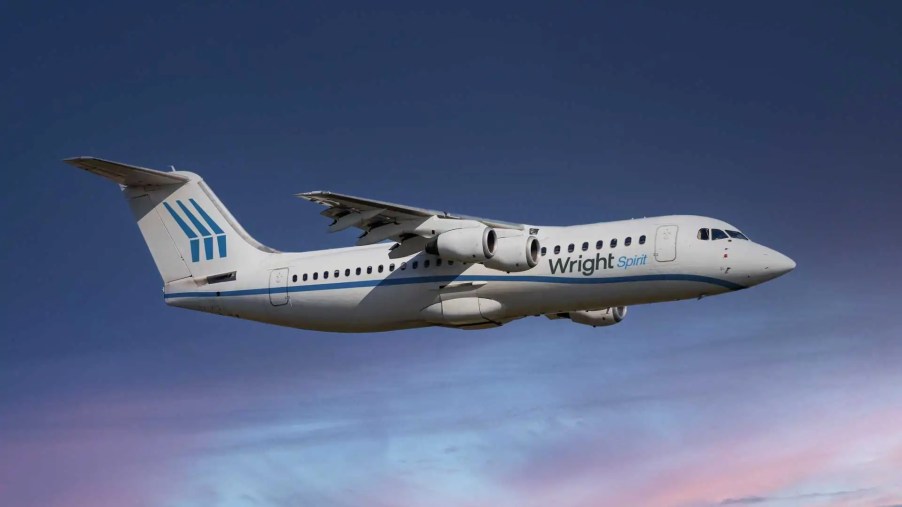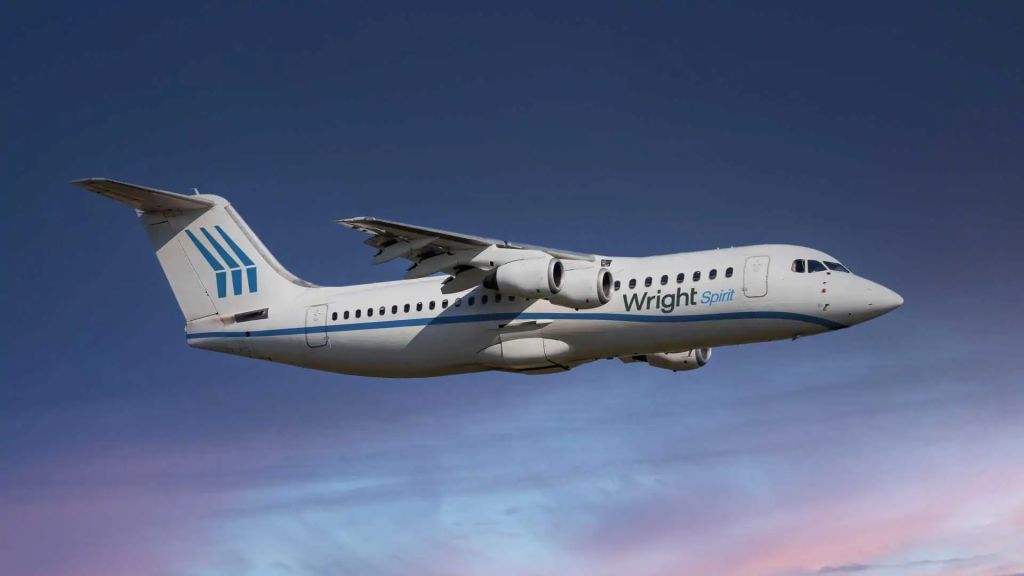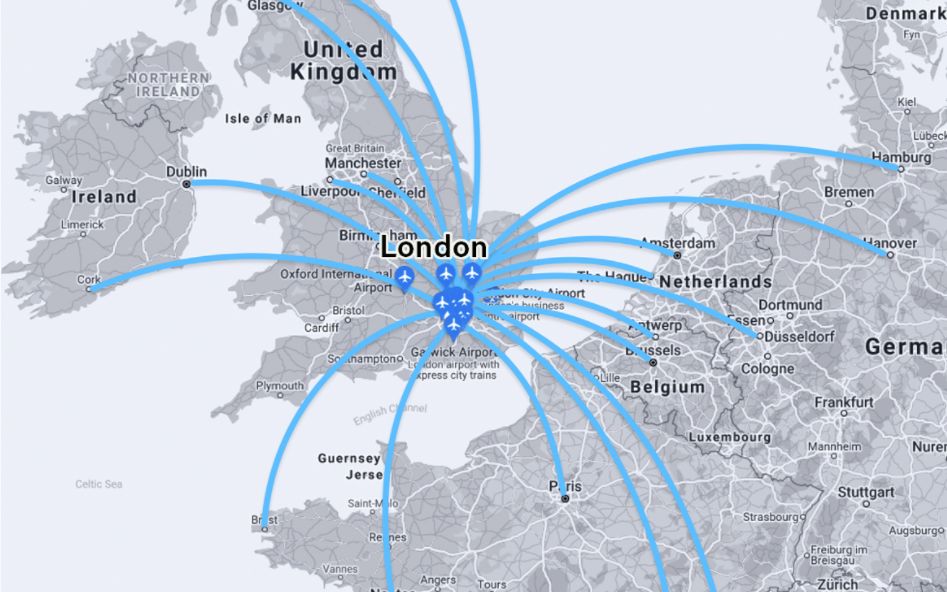
A Fleet of 100 Electric Passenger Planes Will Take to the Skies in 2026
Wright Electric, in no way associated with the actual Wright brothers, has announced plans to get 100 electric passenger planes in the sky by 2026. That’s a monumental feat that’ll create a new wave of passenger transport. But the electric airplanes being used do have a few contingencies. So let’s dive into how these electric planes could change the scope of aviation.

The Wright electric plane will be ready for hour-long trips by 2026
Based on the four-engined BAE-146 aircraft, Wright’s electric plane will be retrofitted with its four electric aircraft engines. The path to refitting the original aircraft, however, will be a rather long one. By 2023, the company will test a BAE-146 aircraft that uses one of Wright’s electric engines and three gasoline engines. In 2024, the company will test the craft with two of its electric engines and two gasoline engines.
Only by 2025 will testing of the all-electric airplane commence, before it’s available to the public by 2026. This is a thorough method of testing as if the electric engine fails on either the one or two engine configuration, the other two or three gas engines can pick up the slack.
And even the aircraft chosen, a BAE-146, is an informed decision. The Aircraft is known for its steep climbing capabilities according to The Straits Times. With a heavier battery pack, the plane may need a steeper climb in order to get airborne.
But if an hour sounds short to you, in reality, it isn’t. In fact, these short-range regional flights will be plenty lucrative in certain parts of the world.
The Wright Spirit’s range and capabilities

When developed, the Wright electric plane will have a range of 460 miles, about an hour’s worth of flight. An electric car with 460 miles of range would be considered quite a feat. But considering a stock BAE-146 can go 1,806 miles, it seems rather small.
However, there are plenty of destinations where short-range flights would be lucrative. For example, most of the major cities in Europe would be accessible for the Wright electric plane. And in America, these planes could be used to travel from New York City to Washington, Atlanta to Orlando, and San Fransisco to LA. For many, these routes are a daily commute.
So the range isn’t the biggest issue with these electric airplanes. But there are other issues they’ll have to adapt to as time goes on.
Reasons we’ll be using electric cars long before we’re using electric planes

FAA regulations in regards to airplanes are remarkably strict. Pilots have to account for how many passengers are on board before they fill up the plane with gas. However, because batteries will always be one solid weight, airliners will have to limit how many passengers will be allowed on the plane. And seating on Wright’s electric plane is limited to 100 passengers
But the main concern I see with electric aircraft isn’t range or weight, it’s temperature. See, electric cars are only capable of about 80% of their battery capacity at 32 degrees Fahrenheit. However, for commercial jets, the outside temperatures can drop to negative sixty degrees Fahrenheit.
Until we develop electric batteries that don’t lose any energy in colder conditions, electric aircraft are going to struggle. But the payoff may be worth it. After all, electric planes and cars are cheaper to maintain than their gasoline counterparts. Not to mention they’re cleaner.
There’s a lot to take into account before electric planes take off. But new technology and innovation will pave the way for electric commercial planes one day. Wright’s electric passenger plane is just taking the necessary first step.


